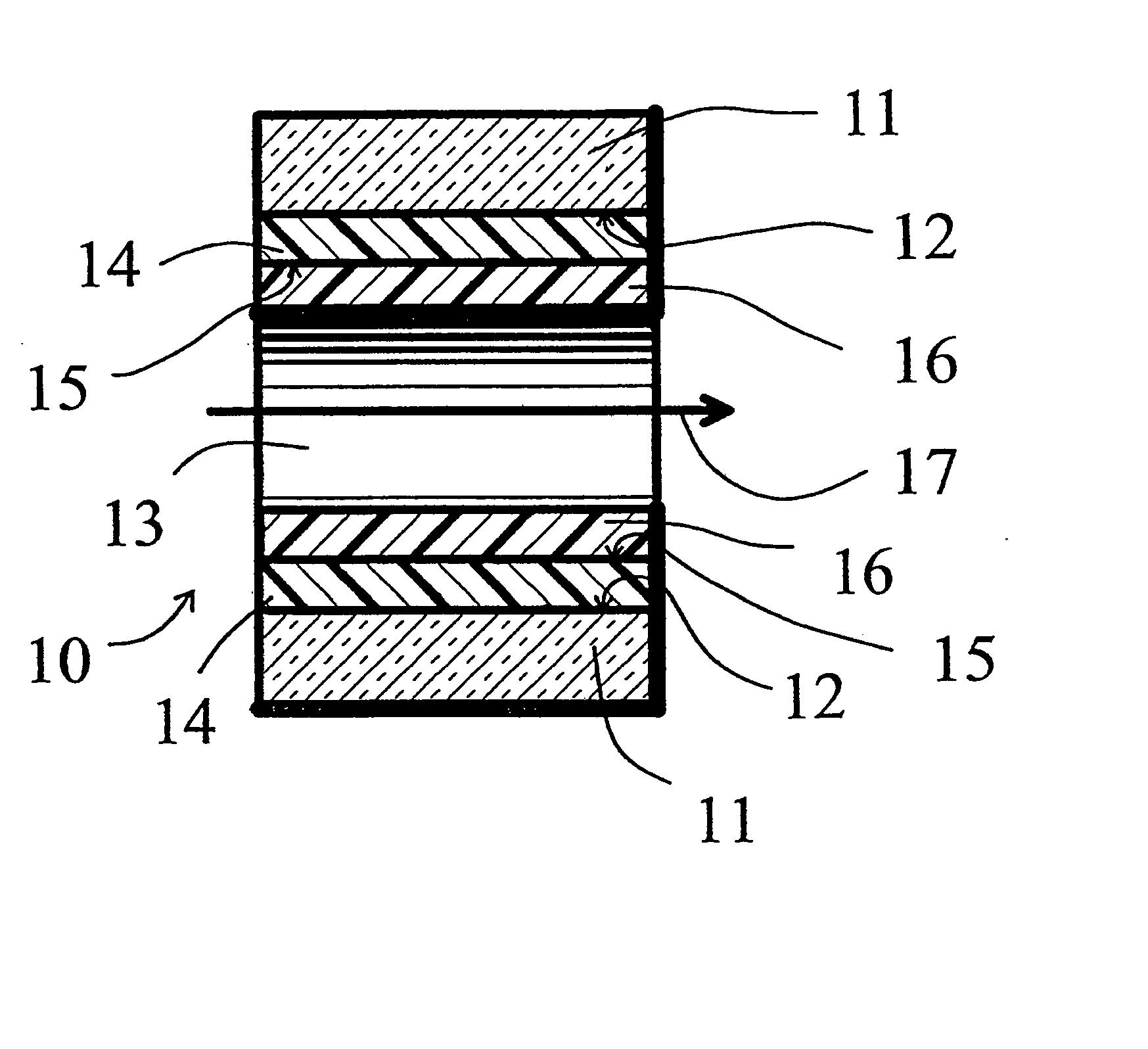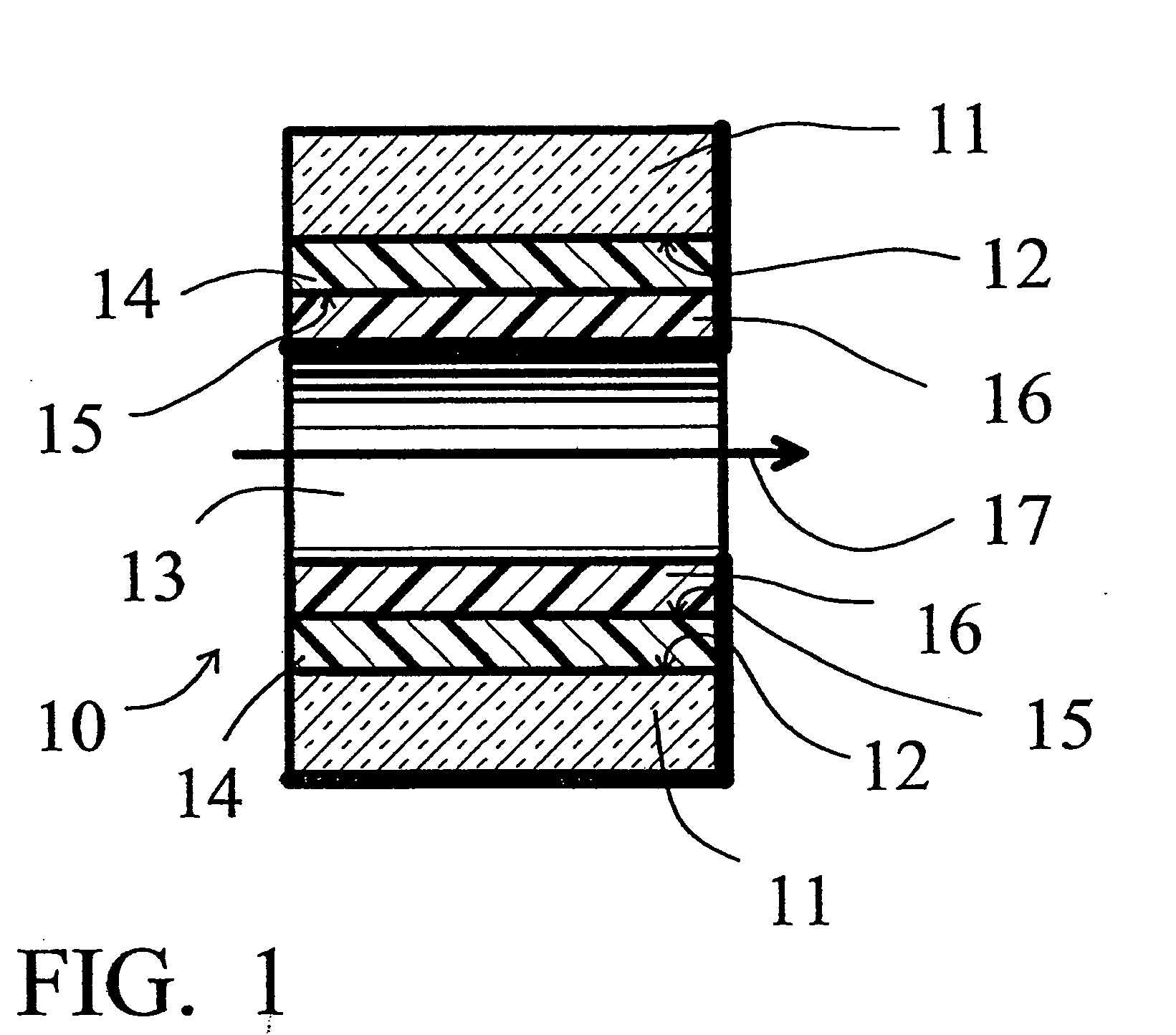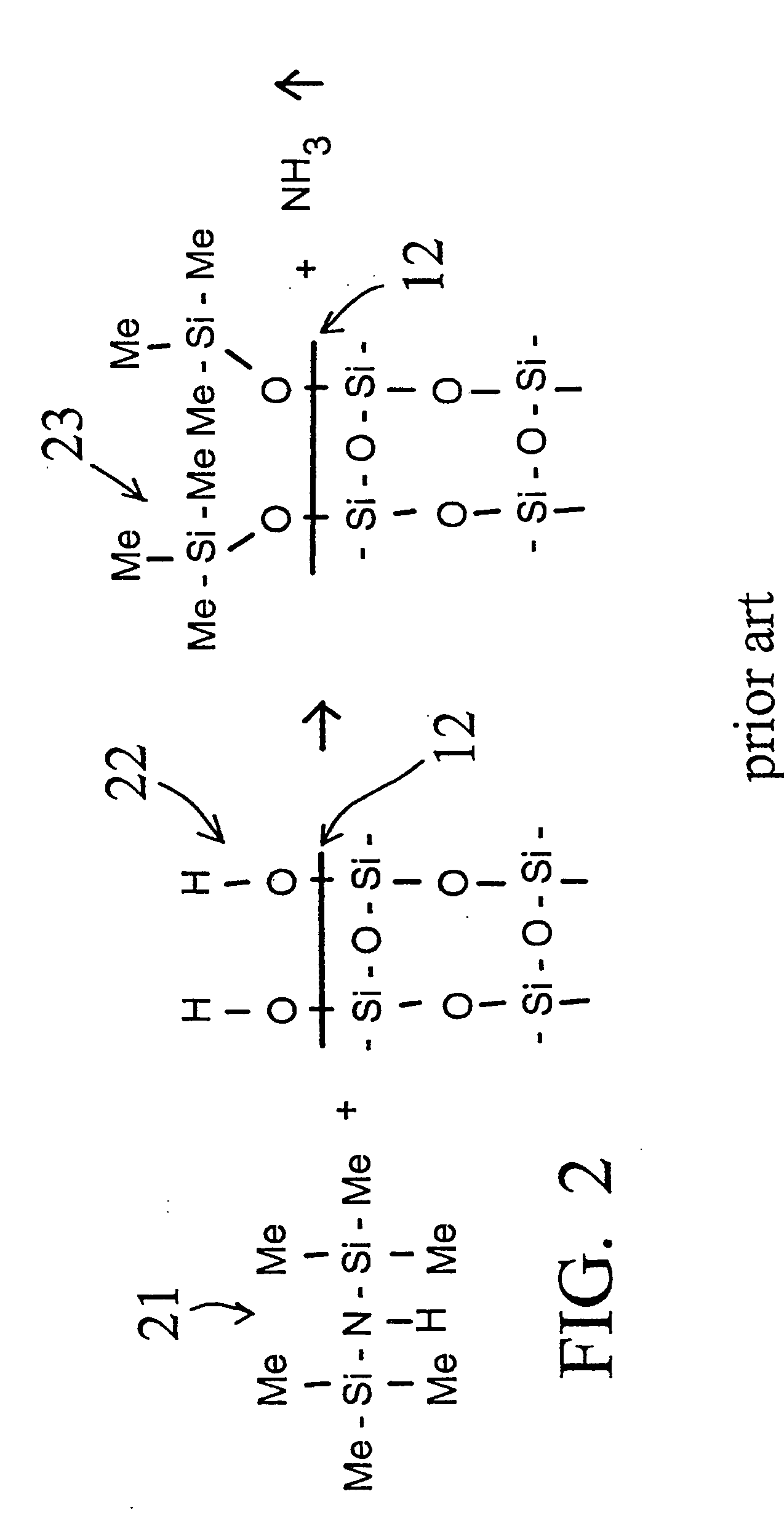Deactivated surfaces for chromatographic separations and methods of making and using the same
- Summary
- Abstract
- Description
- Claims
- Application Information
AI Technical Summary
Benefits of technology
Problems solved by technology
Method used
Image
Examples
example 1
Method Of Synthesizing A Polyalkylhydrosiloxane Composition
[0054] To a solvent mixture consisting of 15 mL of methylene chloride and 15 mL of acetonitrile is added 3.00 mL (2.98 g) of tetramethylcyclotetrasiloxane (which will be equivalent to 77.8 mole percent methylsilylhydride content in the final polysiloxane) and 0.400 g Amberlyst 15 (resin bound sulfonic acid catalyst)(Aldrich Chemical, Milwaukee, Wis., USA). This mixture is typically stirred for approximately 5 hours at room temperature.
[0055] This results in a polymethylhydrosiloxane.
[0056] Then 2.05 mL (2.02 g or 22.2 mole percent relative to the methylsilylhydride content) diphenyltetramethyldisiloxane is added and the mixture is stirred for an additional 12 to 16 hours. The solution is then filtered to remove the catalyst resin. The solvents are removed using a rotary evaporator and the resulting polymer is used with no further purification.
[0057] This results in a phenyldimethylsilyl end capped polymethylhydrosiloxane...
example 2
Preparing a Deactivated Surface
[0058] A deactivation reaction between a surface to be deactivated and a deactivation polymer is shown in FIG. 3 and FIG. 4, with FIG. 2 showing a commercially available prior art alternative “persilylation” reaction. In FIG. 2, the prior art process reacts a disilazane 21 with the silanols 22 on the surface 12 of the glass or fused silica wall. The result is the formation of trimethylsilyl capping groups 23 on the glass surface 12, and the release of ammonia.
[0059]FIG. 3 shows an example of an embodiment of this invention. Phenyldimethylsilyl end capped polymethylhydrosiloxane 26, reacts with the silanols 22 on the surface 12 of the glass or fused silica wall. The result is the formation of a phenyldimethylsilyl end capped polymethylsilyl layer 24 on the glass surface 12, and the release of hydrogen. The deactivation polymer layer 24 is stable and provides continuous coverage of the glass surface 12, and, because of the polar end caps, provides a hi...
example 3
Method of Using a Deactivated Surface
[0063] In order to compare a capillary column comprising a deactivated surface according to the invention to a conventional commercially available disilazane deactivated capillary column (using the chemistry of FIG. 2), a test mix was run through each column. The test mix compounds are, in order of elution, 1) 2-Ethylhexanoic acid, 2) 1,6-Hexanediol, 3) 4-ChlorophenoJl, 4) Tridecane, 5) 1-Methylnaphthalene, 6) 1-Undecanol, 7) Tetradecane, 8) Dicyclohexylamine.
[0064] The chromatogram shown in FIG. 5 illustrates the output of a typical deactivated column produced by a current commercially used production process using the chemistry of FIG. 2. Note the “tailing” (skewing of peak at near the baseline of right shoulder) of peaks number 1, 2, and 3.
[0065] The chromatogram shown in FIG. 6 illustrates the output of a deactivated column comprising a polar group end capped hydrosiloxane deactivated capillary tubing using the chemistry of FIG. 3. The sam...
PUM
| Property | Measurement | Unit |
|---|---|---|
| Velocity | aaaaa | aaaaa |
| Surface energy | aaaaa | aaaaa |
| Chemical structure | aaaaa | aaaaa |
Abstract
Description
Claims
Application Information
 Login to View More
Login to View More - R&D
- Intellectual Property
- Life Sciences
- Materials
- Tech Scout
- Unparalleled Data Quality
- Higher Quality Content
- 60% Fewer Hallucinations
Browse by: Latest US Patents, China's latest patents, Technical Efficacy Thesaurus, Application Domain, Technology Topic, Popular Technical Reports.
© 2025 PatSnap. All rights reserved.Legal|Privacy policy|Modern Slavery Act Transparency Statement|Sitemap|About US| Contact US: help@patsnap.com



